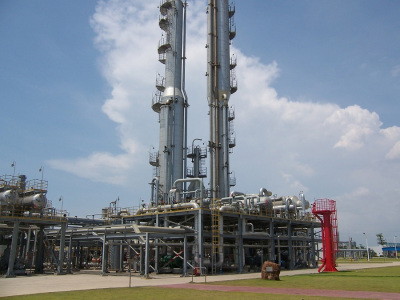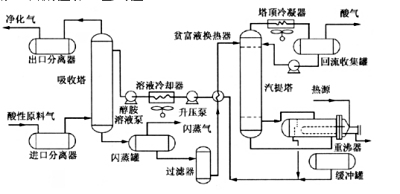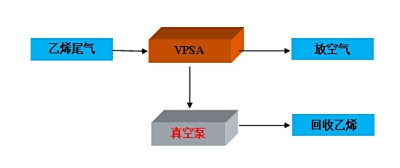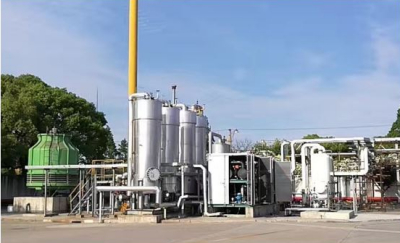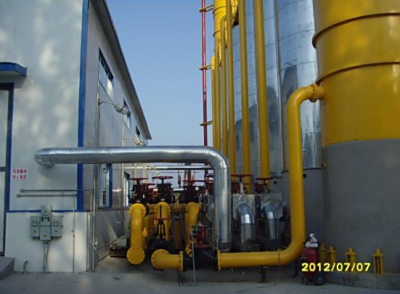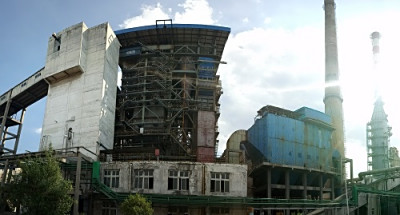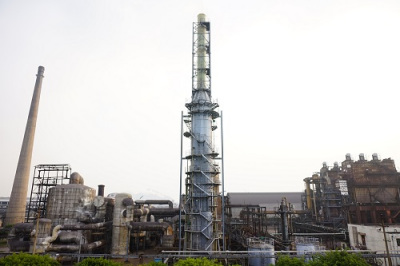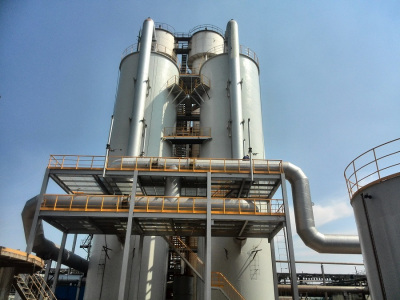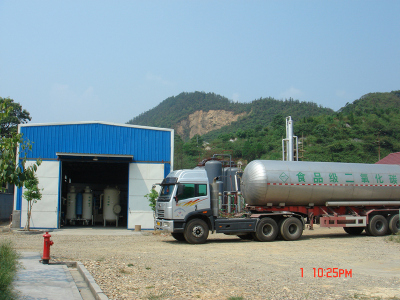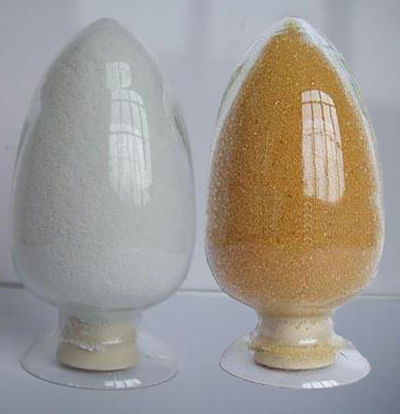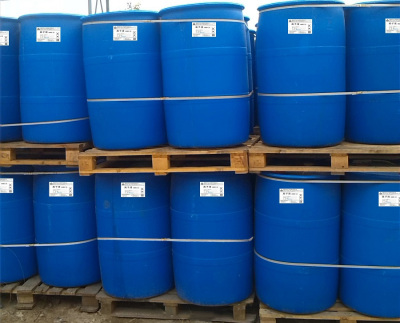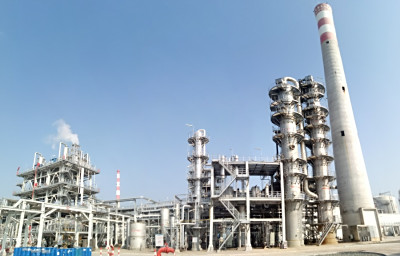Variable Pressure Adsorption (VPA) CO2 removal process is widely used in ammonia, methanol, butanol decarbonisation units and urea, soda ash, industrial CO2 purification CO2 units as well as chi gas and CO2-containing tail gas recovery units due to its high degree of automation, convenient adjustment of removal accuracy, wide range of application, low energy consumption, and other features.
Wet decarbonisation is a widely used decarbonisation process with low energy consumption and is widely used to remove CO2 and H2S from ammonia, methanol feedstock gas, refinery gas, city gas and natural.
A typical process for amine desulphurisation and decarburisation consists of four parts: absorption, flash evaporation, heat exchange and regeneration (stripping).
In recent years, with the enhancement of people's awareness of environmental protection, the international and domestic environmental protection requirements for petrochemical plants, as well as from the waste recycling and reuse, reduce production costs, and create higher economic benefits for the enterprise on the consideration of the process of ethylene, propylene plant tail gas recovery have greater social and economic benefits.
Oil tanks, loading emission gas, petrochemical and chemical production of VOC-containing tailpipe gas, the first variable pressure adsorption concentration, and then condensation recovery process, so as to meet the requirements of environmental protection emissions, but also to recover part of the organic matter.
After the vinyl chloride tail gas is divided into liquids by the liquid separation tank, there are still a large amount of vinyl chloride and acetylene, and the vinyl chloride and acetylene are concentrated and recovered by the adsorption method, which is of high economic value.
There are two mainstream denitrification technologies (1) selective catalytic reduction (SCR), (2) selective non-catalytic reduction (SNCR).
The by-product of ammonia desulphurisation is the fertiliser ammonium sulphate, with approximately 4 tonnes of ammonium sulphate being by-produced for every 1 tonne of ammonia, the economics of which depend on the prices of ammonium sulphate and ammonia.
HDS desulphurisation and de-cyanidation technology belongs to wet redox method, which is a desulphurisation method with distinctive features developed by Chengdu Huaxi together with scientific and technological personnel of ammonia and coking industries, and it can make the removal rate of H2S in the gas reach at least 99.9%, and the removal rate of HCN reach more than 97%.
PSA method of biogas concentration is to use adsorbent to separate methane, carbon dioxide and nitrogen in biogas, so as to achieve the purpose of methane concentration.
Adopting the internationally recognised new catalytic oxidation purification technology, the catalytic purification tower adopts a new type of internal cooling unit, so that the temperature distribution of the bed is in the appropriate reaction area, the normal production of heat balance, reducing the use of electric furnaces, and prolonging the life of the catalyst.
This technology is used to recover the greenhouse gas CO2 from flue gases, and the recovered CO2 can be used to solve the carbon imbalance problem in methanol or urea sections that use natural gas as a feedstock.
This device is a proprietary skid-mounted device for ionic liquid flue gas desulphurisation project, which is the core equipment of ionic liquid desulphurisation process. The desalination device is used to remove harmful impurities such as sulphate, chlorine and fluorine in the ionic liquid; and the sodium desalination device is used to remove harmful cationic impurities such as sodium in the ionic liquid.
Ionic liquids are substances composed of anions and cations that are liquid at or near room temperature. Unlike typical organic solvents, there are no electrically neutral molecules in ionic liquids, it is all anions and cations.
Ionic liquid flue gas desulphurisation technology is mainly used for the treatment and resource utilisation of sulphur dioxide in flue gas and other industrial waste gases. This technology can recover sulphur dioxide with purity as high as 99.5% for the production of chemical products such as sulphuric acid, liquid SO2 or sulphur at the same time of efficient desulphurisation, thus realising the resourceful use of sulphur pollutants.








